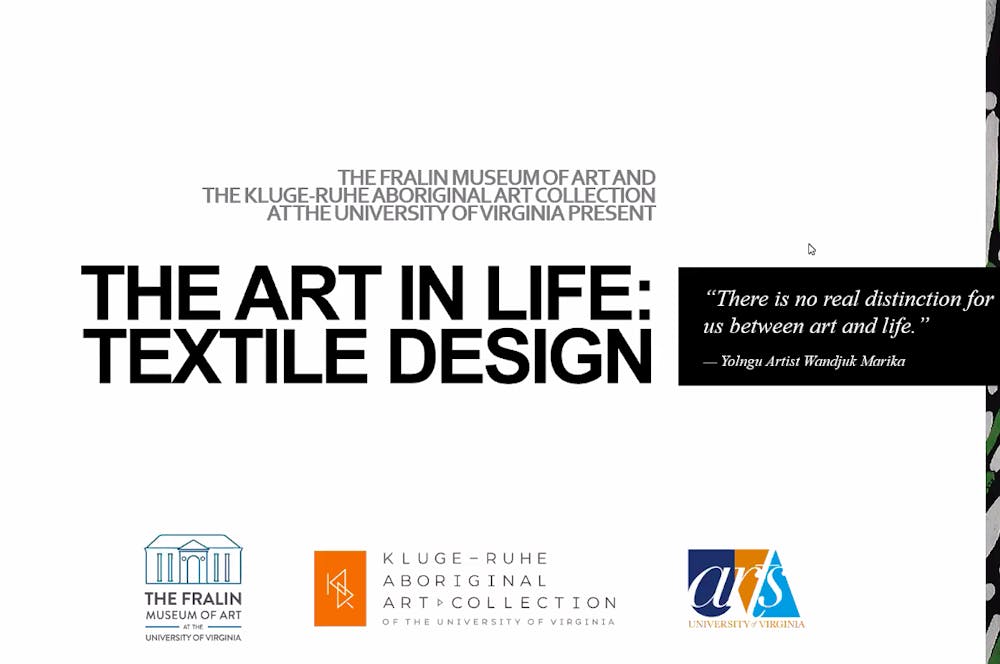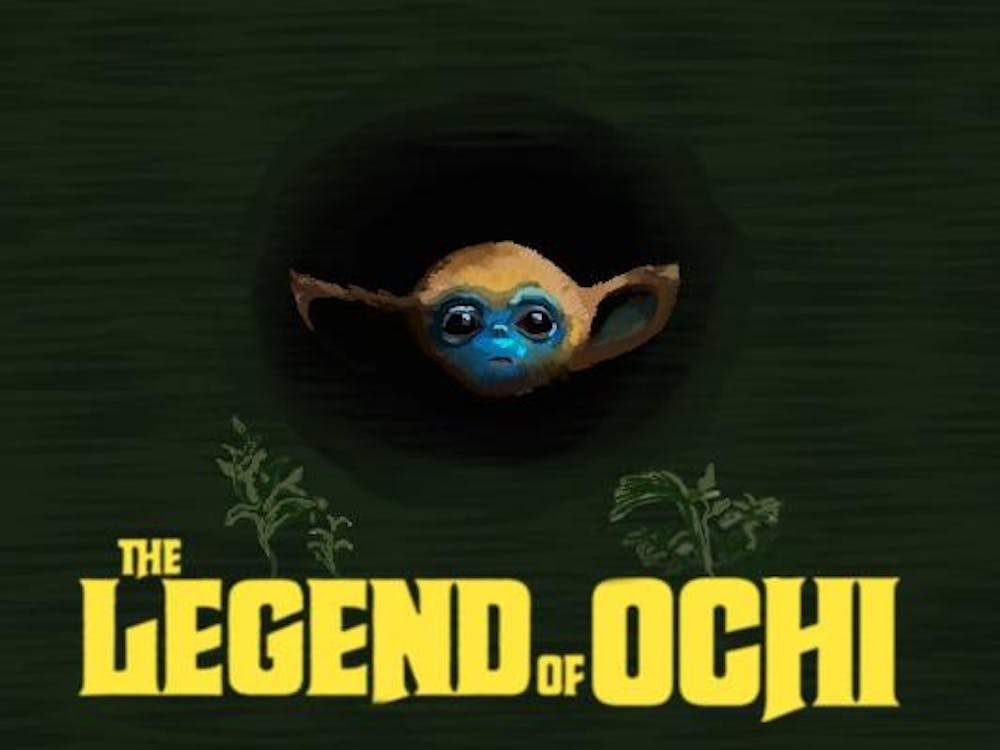The Fralin Museum of Art and the Kluge-Ruhe Aboriginal Art Collection at the University hosted another webinar in their “The Art in Life” series Oct. 7.
The textiles panel was part of the Kluge Ruhe's "The Art in Life" series, which has previously focused on other topics such as food, tattoos, comic books and children's books illustrations. The next installment of this series will be available on the Kluge Ruhe's event calendar.
The “The Art in Life” series aims to explore aspects of everyday life that are not normally considered to be fine art. This most recent installment showcased the artistic nature of textiles and featured three evocative panelists.
The first speaker of the night was Diane Kappa, a pattern designer who previously designed for Nordstrom and is now the founder of Diane Kappa Designs. Working with mediums like block printing and digital illustration, Kappa’s unique designs appear on everything from clothing to wallpaper in retail.
Mili Suleman was the second speaker of the night. Born in India and raised in the Middle East, she started off as a graphic designer, later pivoting to exploring the world of textiles in the home space. Her “KUFRI” line was inspired by a visit to an Indian hill station which shaped her passion for handloom weaving. Suleman spoke about what textiles in her art mean to her, calling textiles a "connector."
"It has helped me connect to other people around the world, such as right now," Suleman said. "I’m able to do all the different things that I love in it... It is not as much about the product, it is more about the connection that it creates for me.“
The last panelist was Kieren Karritpul, a Ngen’giwumirri artist specializing in printmaking, painting, fabric and ceramics. Karritpul’s work is inspired by his culture and family, and has been featured in the National Art Gallery of Australia and The Fowler Museum at the University of California, Los Angeles.
The highlight of the event was the panelists’ evocative, insightful discussion about textiles in their work.
Kappa spoke about how digital printing has made painting and drawings less restricted, and how they have led to a general appreciation for artisan craft — knowing who the artist was, where the product came from and how it was made are important to consumers now.
Another compelling part of the webinar was the discussion on how family and cultural connections have influenced the panelists’ work.
Karritpul spoke about how his great grandmother, grandmother and mother as well as his community have had a great impact on his artwork and use of textiles. Coming from an artistic family of weavers, he decided to be an artist at just five years old, wanting to make art about his culture and language. He spoke about how his family and community have inspired him to make art that looks both back and ahead — art that draws from his culture and past, yet also aims to inspire a future generation.
Similar to Karritpul, Suleman’s work is also heavily influenced by her family. The concept of East and West is prevalent in her textiles, as her parents each come from Eastern and Western India. This duality has influenced her outlook on art as well as the patterns she creates. She also draws from tribal patterns and designs because of how one of her parents grew up in a rural village. Suleman describes her work as “very rustic and imperfectly perfect [and something that] could belong in the family together” — a diverse set of pieces that still belong together.
Another interesting point of the discussion was how each of the artists thought about the sense of touch when using textiles.
“Everytime I pick [painting silk] back up again, it’s a very tactile experience for me,” Kappa said about painting silk, an activity she did in college. She expressed, however, that the physical, tactile aspect of textiles is not something she thinks about anymore.
Suleman and Karritpul offered a different perspective on this topic. Karritpul made a connection between the texture of pandanas — a scratchy palm found in Northern Australia — and how it looks, relating it to the importance of looking at how a textile moves on the body rather than how it feels physically.
Suleman expressed a similar opinion, saying that in her “KUFRI” line, texture is everything: “[I want to create that] imperfectly perfect feel where you can see the slubs [of the yarn] and touch the slubs and really see the reflection of the hand of the weaver.”







